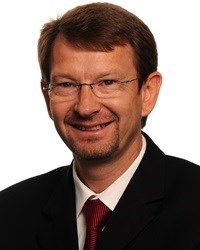Sub-Saharan Africa still offers opportunities to investors

Over the past few years, Africa has been top of mind for foreign business investment, often referred to as one of the last frontiers for economic growth and development, despite the recent economic downturn and headwinds that the continent is experiencing.
Hennie Heymans, MD of DHL Express sub-Saharan Africa, says that the company firmly believes that the African continent is still one of the last frontiers for growth, and that the region will continue to grow as it has over the past decade due to the vast number of unexploited opportunities available for local and foreign investors.
The World Bank’s January 2016 Global Economic Prospects reported that sub-Saharan Africa’s real Gross Domestic Product (GDP) grew at its lowest rate since 2009 in 2015 with a growth of a 3.4%. This was down from the 4.6% and 4.9% growth that was reported in 2014 and 2013 respectively.
“The drop in GDP growth for the region over the past year shouldn’t deter investors. Africa will continue to thrive, albeit, at a slightly slower pace as previously experienced,” says Heymans. “Similar to the global environment – which reported growth of 2.4%1 in 2015 (down 0.2% year on year) – it was a tough year economically for Africa. Compounded by a drop in the demand for the continent’s commodities resulting in falling prices, declining currencies, political instability and El Nino causing widespread drought, have all contributed to the region’s challenges. However, despite this, the region remains abound with untapped prospects and offers growth opportunities in 2016 for those willing to seek them out.”
This is supported by the latest World Bank’ Africa’s Pulse. Author and acting chief economist: World Bank Africa Region, Punam Chuhan-Pole, said of the report’s findings, “The good news is that domestic demand generated by consumption, investment, and government spending will nudge economic growth upwards to 4.4 percent in 2016, and to 4.8 percent in 2017.”
The report also highlights that specific regions have higher growth prospects than others. Cote d’Ivoire, Ethiopia, Mozambique, Rwanda and Tanzania were listed as countries expected to sustain a growth of approximately 7% per year in 2015-17. This was attributed to large-scale investment into energy and transport projects, consumer spending and investment in the resource sector.
Country growth opportunities
Heymans says that based on the group’s experience, each country offers unique growth opportunities. “For example, in Ethiopia, the telecommunications sector is a large contributor to GDP. It was reported that the country had 40 million mobile subscribers and 10 million internet connections in 2015. However, with a population of over 90 million, the sector has capacity to double its contribution to GDP.
“In Mozambique, the retail sector is offering huge opportunities. With a growing middleclass and shopping culture, coupled with a limited availability of common products, this sector offers opportunities for both small and large businesses.”
“With Rwanda’s ambition to become a regional ICT hub, there has also been a stronger demand for communication devices and ICT-related equipment. Similarly, we’ve seen an influx of medical supplies in the country with a booming healthcare sector.”
Heymans adds that more countries in the region could be thriving if not for underdeveloped infrastructure and bureaucracy. He points to the mining sector in Madagascar as one example. “This could be a potentially lucrative opportunity for investors due to the country’s coal, nickel and ilmenite resources; however, several legislative reforms are still needed.
“The opportunities are clearly there, it’s all about having a long-term, sustainable focus on the region. As we move into the second quarter of 2016, DHL Express will continue to invest in the SSA region, in our people and our network, with the ultimate goal of seeing Africa thriving,” concludes Heymans.






















